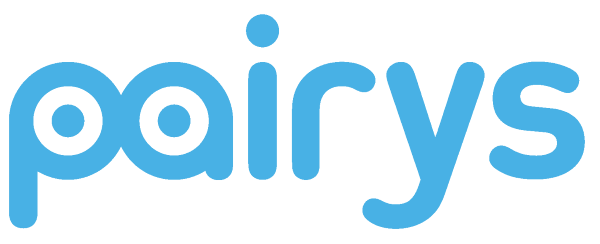About Pairys
While reviewing, the observer comes up with ideas on how to improve the code, and gives advise on the strategic direction of the work. This frees the other party to focus all attention on the tactical aspects of implementing the current task. The observer acts as a safety net and guide.
Studies have shown that pair programming improves code quality significantly. However, it also increases the number of man hours used, and therefore cost.
Advantages
- Less programming errors
- Compact code
- Higher discipline
- Better code quality
- Excellent knowledge transfer
- Team building
Today developer teams are offered spread world-wide. A lot of programmers work from a home office. Software development often is outsourced (Eastern Europe, India) and/or provided by freelancers.
Innovation
Remote pair programming builds on the pair programming concept by not having the two parties sitting at one desk, but instead have them connect using a Remote Desktop sharing software. This is not commonly practiced today, also due to lack of suitable Software.
This is where Pairys innovates: It not only implements Remote Pair Programming, but a brand new technique called “Bidirectional Remote Pair Programming” (BRPP).
BRRP explained
With BRPP, both programmers run a Dual-Screen setup. On the right screen they see their own code. Using the Pairys software the left screen instead is showing what the remote programmer is working on. Both programmers are equipped with Headsets, and therefore are able to do voice communication with each other.
Both programmers are also able to take over control of the remote programmer‘s screen, to assist in writing code or fixing bugs.
How productivity is doubled
With BRPP, both programmers are “driver” and “observer” at the same time. They write code on their own screen, but also are able to have a look at the left screen to see what the other party is doing.
Typically when a new block of code or problem is started by programmer A, programmer B will assist, with both discussing on how to best solve the problem. Then programmer A starts implementing, while programmer B works on a different block of code. From time to time he‘ll give programmer A suggestions.
About the Inventor
Computer nerd, inventor, leading figure, and executive – Simon Kissel unites several extraordinary gifts and qualities. As self-educated person, he started programming at the age of 10; at the age of 17, he dropped out of school, and opened a computer shop. He soon became known through the international community of computer artists, and organized the world‘s biggest festival of computer art, the Breakpoint, for 8 years.
By trial and error, Simon, having mastered the technology, managed to gain experience in the area of economy even without taking up respective studies. His computer shop turned into a software developing company, which became market leader for chat server systems in times of the “New Economy”.
In 2005, Simon Kissel invented the worldwide unique VPN bonding method that enables mission critical communications to be run over cheap Internet broadband lines; he first implemented it, and got granted a patent application for it. In 2006, he founded Viprinet, in order to further develop the bonding technology in form of hardware routers, and market it then. For Viprinet, he thus always played a double role: CEO and head of development rolled into one.
Viprinet today is a market leader in mission critical IP communications, with a business focus on Europe, South Africa and Turkey. The company HQ is located in Bingen am Rhein in Germany, a town located in the middle river Rhine valley close to Frankfurt. US offices exist in Sunnyvale, California and Champlain, New York.
In 2011 Simon has founded Kissel Ventures GmbH, which acts both as a holding company for his past investments, but also intents to invest into new start-ups and innovations. In the same year, he also founded Nerdherrschaft GmbH, an R&D company that provides software- and hardware development resources to his own group of companies, but also to third parties.
In 2014 together with a partner Simon Kissel bought a 15.000 m² (160,000 ft²) business property (which used to be Germany‘s biggest wine distribution company), and is now transforming that to an Innovations park, which will serve as a home for his existing businesses and third-party start-up businesses as well.
Starting 2016 Simon has begun handing over control of Viprinet‘s operations to his management team. He is doing this as Viprinet today is a mature and stable business, that needs to grow sales, not R&D. This frees up time for Simon to again focus on providing innovations and to direct these getting implemented.
Simon has invented the idea of Bidirectional Remote Pair Programming, and lead the team that implemented the first software prototype. At Pairys, he will be providing vision and direction on innovations and R&D.
Simon Kissel's personal Website (german language only)
